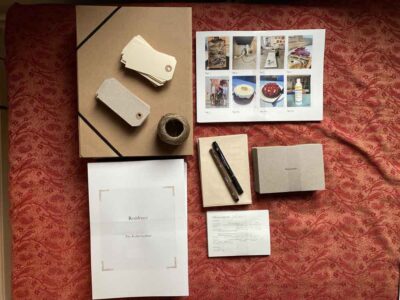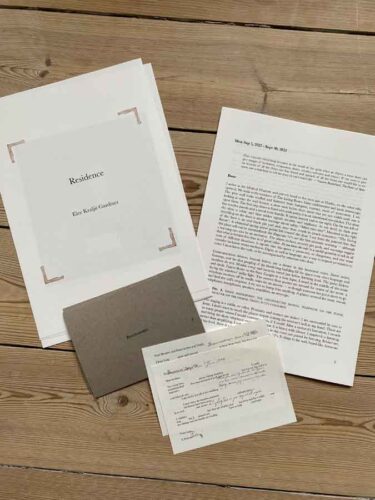In September 2022 I travelled from Vancouver, Canada to Copenhagen, Denmark , to visit the Medical Museum. Until the mid-1800s, this grand and historic building housed the national medical school. It is now a public museum and archive that holds offices for administration, research, and storage. I was participating in a two-week artist residency that focused on The Living Room—a partially subterranean room within the four-storey building. In The Living Room, Martin Grünfeld, an assistant professor and researcher at the Novo Nordisk Foundation Center for Basic Metabolic Research at the University of Copenhagen, and his cohort of collaborators, are practicing a theory of decay and recomposition.
Martin and his team developed The Living Room as an active curation and visitation space by creating installations with the unused, unuseable, or peripheral objects they found in storage. They rearranged and repositioned these objects in the room based on ideas regarding “liveliness” in curatorship and public and institutional concepts of valuation.
Questions that this space presents, or that they address are various: What happens if co-creators such as insects, fungus, and bacteria are acknowledged as common residents within the curated space of a museum? What kinds of life, or liveliness, can exist inside an imagined-as-static, temperature-controlled, preserved archive? What dynamic exists—or could exist—between these defunct or obsolete (but, perhaps, also still working) objects and the species that can thrive in museum environments or adapt, opportunistically, to them?
Movement, degradation, and transformation are visible elements that inform the curation of The Living Room. This curatorial ethos runs counter to museum exhibits that present the object as untouchable (rescued, preserved, and presented behind cordons or glass); here, the public is welcome to touch and move the objects in the room. People, like the opportunistic waxworms, funghi, and bacteria that spread across, eat, or decompose the displays in The Living Room are responsible for change in the room. The room is never technically “still” and coexistence in this space has durational implications.
In Canada, I have been investigating and questioning the process of change and decay. I’ve been exploring these ideas within the field of ecopoetics, rather than science, and creating ongoing installations placed in naturalized outdoor and indoor spaces. This chapbook is a record, a report, of my thinking during two residencies. It was published by Otter Press in 2023 and printed in Copenhagen.





To hear a reading from RESIDENCE at the Medical Museum in April 2023, click below. Thank you to Eduardo Abrantes for the recording.
